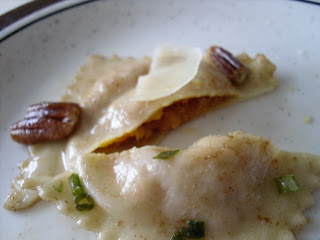 Warning / Disclaimer: Use the instructions and commentary within at your own risk. I am not responsible for any damage, injury or recklessness when you use caramelized sugar. Caramelized sugar can be extremely dangerous to work with if you are not careful. I've seen patches of skin be removed and/or burnt while working with sugar because others were not mindful of this extremely hot medium!
Warning / Disclaimer: Use the instructions and commentary within at your own risk. I am not responsible for any damage, injury or recklessness when you use caramelized sugar. Caramelized sugar can be extremely dangerous to work with if you are not careful. I've seen patches of skin be removed and/or burnt while working with sugar because others were not mindful of this extremely hot medium!I woke up early to make some small details for Ms birthday dessert. I'll post the entire thing tomorrow, with a recipe.
In cooking school, sugar art was never really my thing. (Did I ever have a "thing"???!) Sure, it looked pretty and had an impressive presence, but it rarely had flavour. But it did have a useful byproduct: caramel sauce!!! haha!
I decided to make these sugar decorations for Ms dessert at about eleven at night. I was already in bed, but had this vision in my head for something impressive. What better embelishment than sugar art!
You are always supposed to start off with equal parts (by weight) of sugar and water. However, I don't own a scale! I've learnt to eyeball it by the way the sugar melts and liquifies - it may take a couple tries, but for now, try adding half cup sugar to half cup water, and heat it over medium-high heat.

While the caramel is coming together, you want to prep a large bowl of ice water to rapidly cool down the caramel once it gets to the right colour / temperature. I cannot stress how important this is because once the sugar caramelizes, it goes fast. It takes a mere 30 seconds for sugar to go from a beautiful golden caramel colour, to developing a disgusting burnt sugar flavour.
Once again, please heed my warning above. I have seen a lot of ugly burns from hot sugar. Sorry to be so graphic, but that vision of my cooking partner reacting to the dollop of burnt sugar that landed on the back of his hand really stuck with me!
The caramel will begin to bubble and thicken and develop a slight candy-like smell. If you add more sugar to it at this point, it will actually seed the caramel and the sugar will start to crystalize out of solution. If this happens, you can try to salvage it by stirring the sugar around and continuing to heat it. You'll still have slight crystalization around the edges, but the bulk of the caramel will cooperate.
If you add more water at any time of caramelizing the sugar in an attempt to thin it out, again, please be careful - the mixture will sputter and spit and steam. It's basically like adding water to the adorable Gizmo in the movie 'Gremlins'. :)
Once the caramel has reached a nice golden colour, dunk the bottom of the saucepan into the ice water bath, then place on an angle on a folded towel. You're ready to make sugar embellishments!

For Ms dessert, I set out to make some simple sugar strands, because it was early this morning. I simply fanned / drizzled the thickened, caremelized sugar that had been "shocked" in cool water, onto a buttered surface, like parchment paper. Normally, I'd use a Pam-sprayed sheet, but I didn't have any. Later, I decided to get a little fancier and make some sweet little tendrils.
First Attempt: As much as I caution the use of sugar, this was a little daring for me so early in the morning - after all, for some *genius* reason, I don't drink coffee on weekdays. To make the tendrils, I wrapped a slowly solidifying stream of caramelized sugar around a buttered wooden spoon handle, or in this case, my finger.
Please be careful! I've dealt with sugar before and I know when it is pliable / good to handle, plus I seem to have retained a little of my "asbestos hands" from cooking school. If this is your first attempt, use a buttered wooden spoon handle.
First Attempt... 
|
Better.... 
|
Best! 
|
Set your creations down on a buttered surface and allow them to harden.
I'll post the finished final result tomorrow! We'll most likely be going out for dinner for Ms and his mothers birthday (he was born on his moms birthday - poor mom! :p).
Have a good Thursday!




































